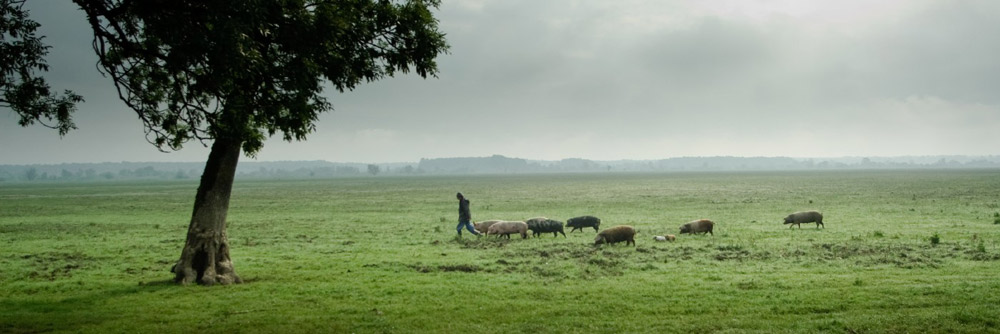Wet Meadows
Wet meadows and pastures – where storks love to get their feet wet
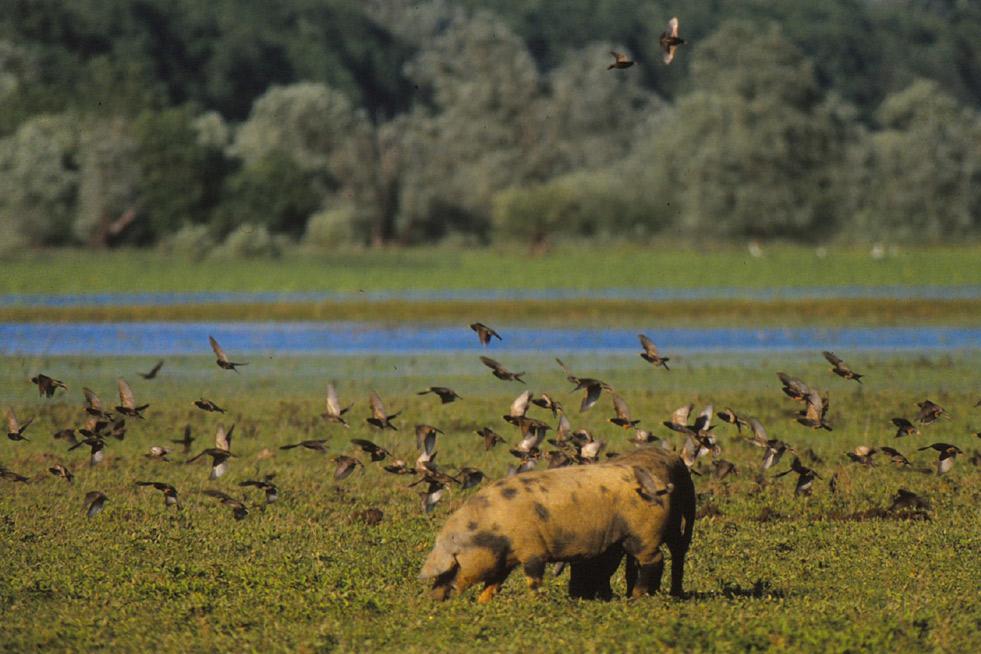
In the Croatian Lonjsko Polje Nature Park home of the first European Stork Village, Čigoč, a lesson comes alive. A lesson on how people can utilize wet meadows and pastures and at the same time share the natural wealth of these habitats with a bounty of wild species. In spring the area teems with wildlife. Storks, herons and spoonbills feast on the abundance of frogs, snakes and insects. White-tailed eagles soar through the sky and in the evenings the air is filled with the croaking of the European tree frog and the characteristic moaning of the fire-bellied toad. For many generations people in Čigoč have been using the floodplains of the river Save to raise their cattle, horses and pigs and at the same time as a natural flood prevention system. The regular flooding provides nutrients and moisture to the meadows, pastures and woodlands. It nourishes the farm animals and a diverse fauna and flora. Nowadays local people benefit from their traditional pasturing system in yet another way: The beauty of the landscape and the biodiversity attract bird watchers and nature lovers from all over Europe and are thus supporting small ecotourism enterprises and the Nature Park Lonjsko Polje.
What are wet grasslands (good for)?
Wet grasslands1 are biologically diverse components of agricultural landscapes that have been managed, often for centuries, by farming [...]. They provide multiple ecosystem services, including flood attenuation, groundwater recharge, sediment storage, nutrient removal, erosion protection, and aesthetic value. Wet grasslands are mostly semi-natural, formed by drainage of other wetland types (e.g. fens or marshes) or forest clearance on floodplains, and are maintained by human intervention, often cutting for hay (called meadows) or extensive grazing by livestock (pastures). They have an abundance of grasses (or sedges), periodic flooding with fresh or brackish water, or a high water table for at least some part of the year, sufficient to influence the vegetation and associated biological diversity. Wet grassland types in Europe include wet meadows and pastures, floodplain or alluvial grasslands, polders, fen meadows, and sea-shore meadows.
The definition of wet grasslands is cited from Joyce, C. B. (2014). Ecological consequences and restoration potential of abandoned wet grasslands. Ecological Engineering 66, pp 91–102. DOI: 10.1016/j.ecoleng.2013.05 .008
Threats and Pressures
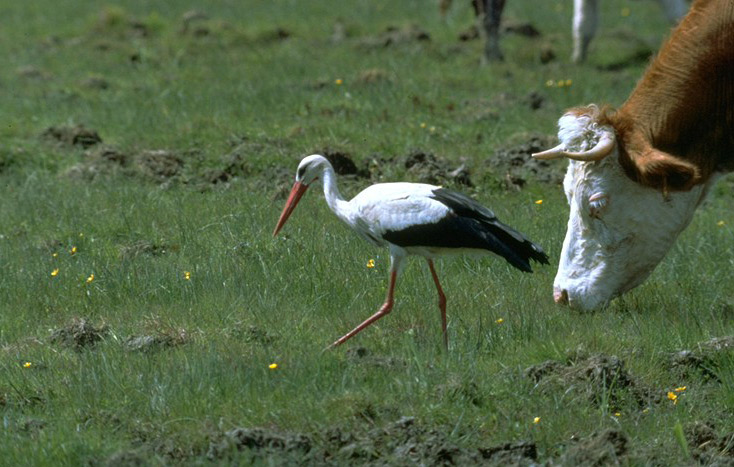
Dragonflys cut through the air like little sapphire arrows, snipes and northern lapwings are performing their unique courtship flights and white storks stride in their quest for frogs, fish and snakes. Well-managed wet grasslands are extremely species rich, but biodiversity is declining fast due to habitat loss and degradation since the 1950s. European wet grasslands are not threatended by agriculture per se but by agricultural intensification, involving ground water depletion, cultivation, overuse of fertilizers, and herbizides. While intensifying agricultural practices damages European wet grasslands, so does the abandonment of grazing and mowing. Without such management interventions aggressive species may outcompete subdominant ones.2
Wet grassland areas are under constant pressure, from agricultural draining to obtain arable land or higher grass yields and from abandonment of grazing and mowing. But there is also the ever growing demand for roads, parking lots, industry, housing and other infrastructure. The European Environmental Agency estimated in 2000 that „About two-thirds of the European wetlands that existed 100 years ago have been lost [...].“3. It can be conjectured that wet meadows and pastures have been at least equally affected, based on quantitative data from some European countries like England4 (historically about 1,200,000 ha of wet grasslands; nowadays only about 220 000 ha) or Hungary5 (declined from approximately 600,000 ha in 1950 to 200,000 ha in 1990).
Zedler, J.B. (1999). Book Review: European Wet Grasslands: Biodiversity, Management and Restoration, by CB Joyce and PM Cade. Restoration Ecology, Vol. 7, No. 4, pp. 411-412
EEA – European Environment Agency. (2000) http://www.eea.europa.eu/publications/signals-2000/page015.html
Treweek J, José P, Benstead P (eds) (1997) The wet grassland guide. Managing floodplain and coastal wet grasslands for wildlife. RSPB, Beds.
Joyce ChB, Wade PM (eds) (1998) European wet grasslands. Biodiversity, management and restoration. John Wiley & Sons, Chichester
Conservation and Restoration
Traditional pasturing systems as in the Croatian Lonjsko Polje have become a rare sight in Europe. But in locations like the Eifel-region in western Germany6 it could be demonstrated that conservation and restoration measures in close cooperation with farmers can successfully halt the loss of biodiversity in a meadow rich cultural landscape. Successful measures include regular, biodiversity-friendly mowing schemes and grazing with native livestock breeds. Depending on the local situation it is important to develop restoration methods carefully and on a scientific basis. Abandoned wet grassland for example could be restored with very good results7, whereas the restoration of fens and fen meadows in the Netherlands showed only limited success.8 Another approach is the rewilding of wet meadows and marshland areas, like it has been done in the Oostvaardersplassen polder in the Netherlands, where large herbivores like Heck cattle, Konik ponies and Red deer are preventing the wet meadows from being overgrown by trees. The 56 square kilometres polder area is kept with minimal human intervention and has developed to a biodiverse nature park that has been called „the Serengeti behind the dikes“.9
Schumacher, W. (2015) Erhaltung artenreicher Wiesen, Weiden und Magerrasen durch dauerhafte Kooperation mit Landwirten? - Voraussetzungen und Erfolge integrativer Naturschutzkonzepte am Beispiel der Eifel, presentation at the meadow management conference, April 2015 in Oberelsbach (Rhön), Germany
http://www.ifab-mannheim.de/links_download.html
Joyce, C. B. (2014). Ecological consequences and restoration potential of abandoned wet grasslands. Ecological Engineering 66, pp 91–102. DOI: 10.1016/j.ecoleng.2013.05 .008
Klimkowska A., Van Diggelen R., Bakker J.P. & Grootjans A.P. (2007) A review of the success of commonly used wet meadow restoration methods (rewetting, topsoil removal, and diaspore addition) in Western Europe. Biological Conservation, 140, 318-328
Kolbert, E (2012) Recall of the wild. Article in the New Yorker. http://www.newyorker.com/magazine/2012/12/24/recall-of-the-wild
The wet meadows and pastures project (WMP)
Grassland areas where storks get wet feet, cuckoos call and orchids bloom used to be a usual sight all over Europe. But not anymore. The project “Wet meadows and pastures: Threatened habitats in Europe” is aiming to counteract the loss of wet grassland in Europe in three different ways:
(1) It aims to increase the area and quality of wet meadows and pastures in the network of European Stork Villages (ESVN). (2) It fosters the exchange of ideas and know-how between the ESVN all over Europe. Stork festivals and workshops bring experts together and an expert handbook gathers the basic knowledge for the protection of wet grasslands. And finally (3) the project aims to strengthen the ESVN and extend public awareness of the threats that wet meadows and pastures face today.
To achieve these aims the project supports several activities in the villages from wetland restoration to educational programs for children. All stakeholders in the villages are animated to start activities contributing to the project goals and can apply for financial support either via Small Grants and Habitat restoration measures and also more holistically via a Local Action Plan (LAP).
Local Action Plan (LAP)
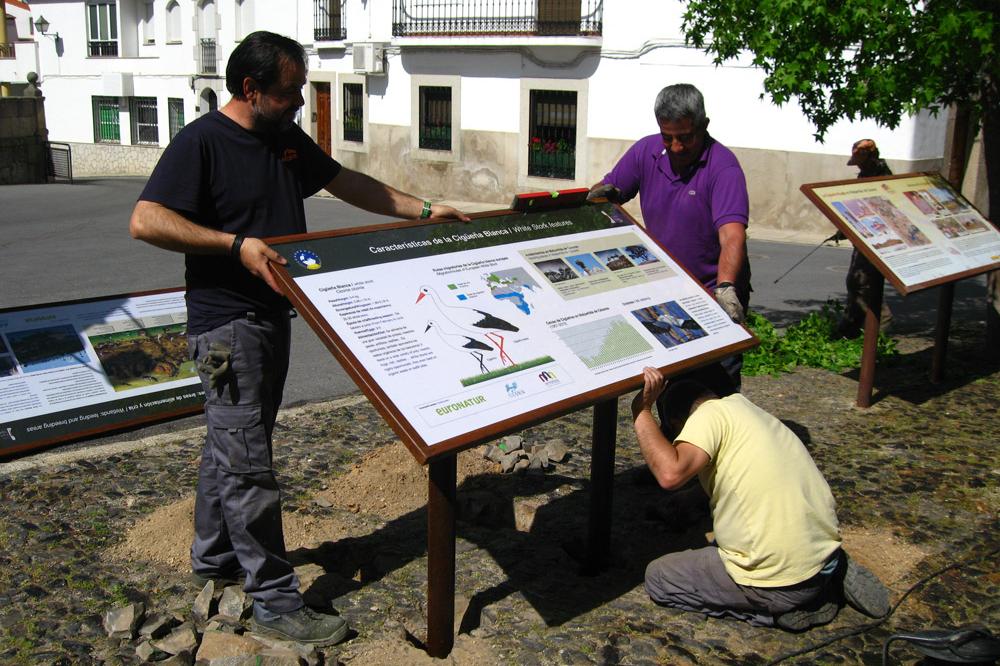
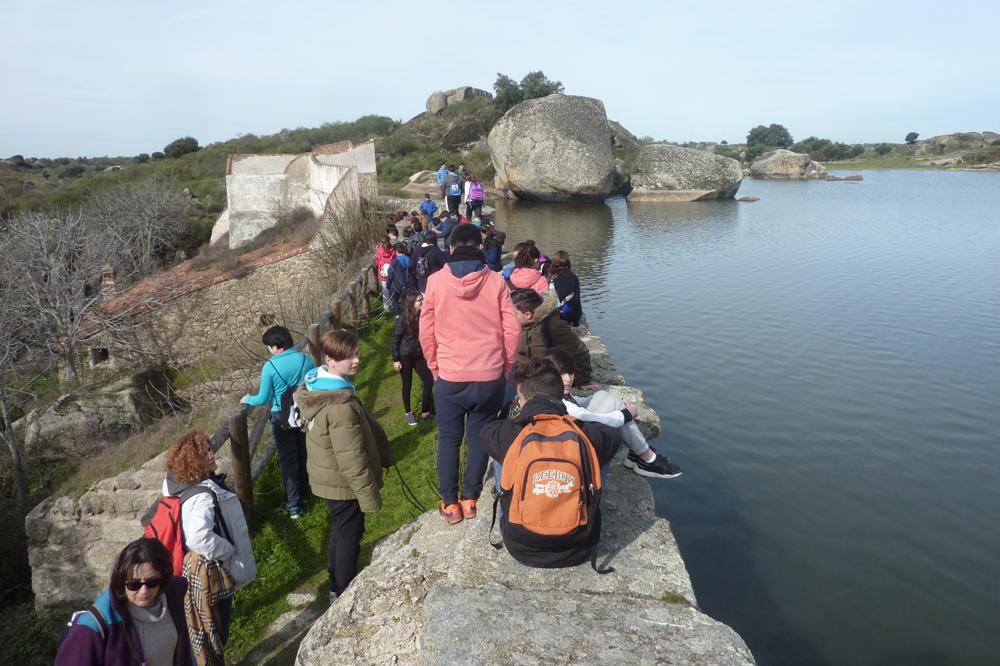
A Local Action Plan or LAP is a “master plan” for a diverse bundle of measures, which the village intends to implement together with its partners and in close cooperation with the local community.
EuroNatur and Ciconia have developed a LAP-template as well as a guiding checklist to assist the villages in developing their very own LAP. The LAP is meant as a dynamic planning tool that has to be revised and optimized constantly. It not only defines short-, mid- and long-term measures for the protection and development of wet meadows and pastures; it also analyzes the status quo in order to set a baseline against which future developments can be judged. Based on this status analyses the LAP formulates development goals for the village and outlines a set of actions, which contribute to the achievement of these goals and which can be structured into five categories:
- Actions for improving the local habitat conditions with focus on wet meadows and pastures
- Actions for improving the breeding situation for the white stork
- Actions for improving the rural development
- Actions for strengthening communication, education and public awareness (CEPA)
- Actions for capacity building
As the actions in the LAP are budgeted and timed, the LAP can also be used by the villages as a ready-to-use tool for newly emerging fundraising opportunities.
Until 2017, six ESVs have developed a LAP for their community and are now using it as a planning (and fundraising) tool for diverse conservation measures:
- Belozem in Bulgaria, supported by the NGOs Green Balkans (via their service unit Ekologichen Centar EOOD) and Community Center Prosveta 1909
- Češinovo-Obleševo in North Macedonia, supported by the NGO Macedonian Ecological Society (MES)
- Nagybajom in Hungary, supported by the NGO Ciconia
- Malpartida de Cáceres in Spain, supported by the NGO Storch Schweiz
- Taraš in Serbia, supported by the NGO Bird Protection and Study Society of Serbia (BPSSS)
- Eskikaraağaç in Turkey, supported by the local conservationists Franziska and Ismet Arici
The standardized creation of LAPs enabled the ESVs and their partners to develop a concept for the development of their village that will last beyond this project. The LAPs are a valuable tool for a strategic and sustainable development of the villages and for fundraising by the villages themselves, thus promoting the independence of the local stakeholders in the future implementation of further conservation projects.
Habitat restoration
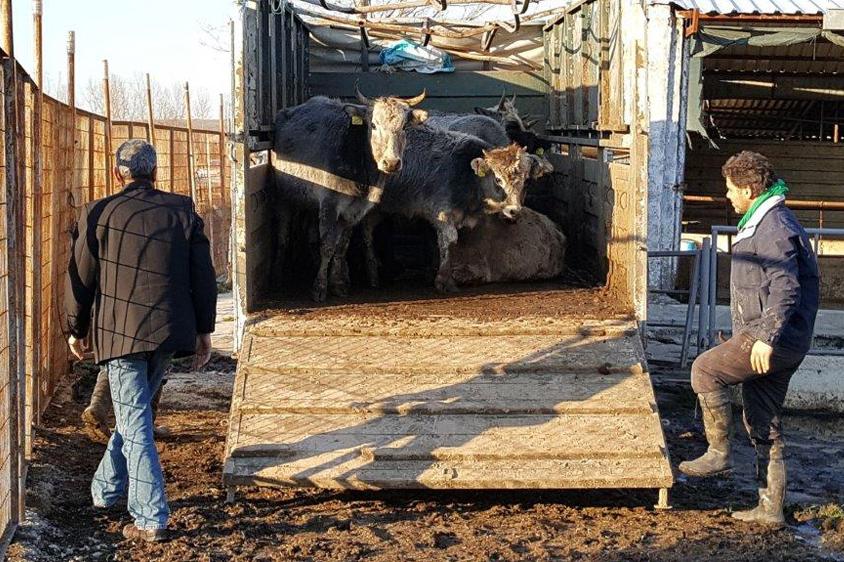
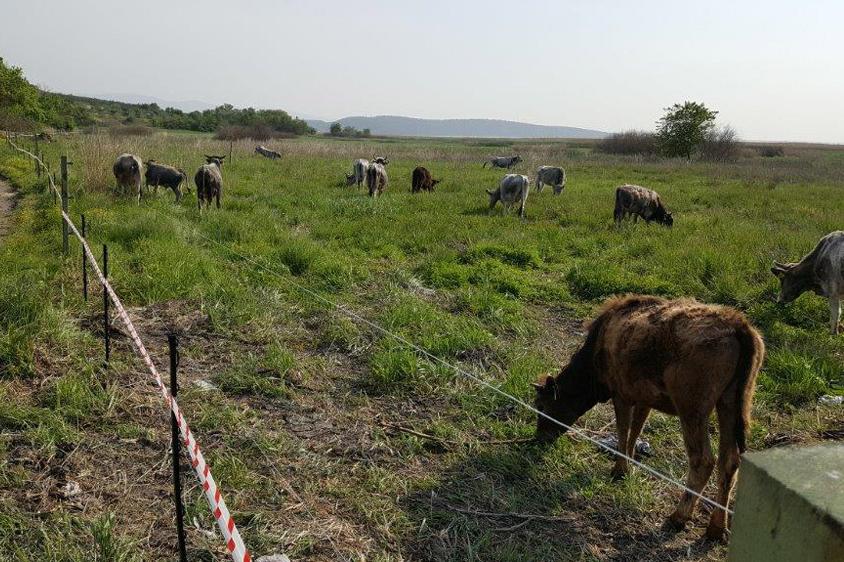
The restoration, creation and extension of wet meadows and pastures in the ESVs are supported by specific habitat improvement projects. On the basis of the LAPs selected local conservation measures are implemented. Some examples of the nine habitat related measures that have been realized until 2017 are the following:
- In Belozem, Bulgaria, an abandoned rice field has been turned into wet meadows with the support of the Bulgarian NGO Green Balkans.
- In Buzica, Slovakia, the revitalization of a wet meadow, combined with the creation of small water bodies and the removal of bushes has been realized with technical support by our partner Ciconia.
- In Eskikaraağaç, Turkey, new pastureland has been created at the edge of Lake Ulabat and is being grazed by a small herd of the local cattle breed “Boz Irk”.
- In Nagybajom, Hungary, a small river has been restored in order to allow regular flooding of an area with wet meadows and pastures, with support by the Duna-Drava National Park Directorate.
- In Malpartida de Cáceres, Spain, a near-natural wetland complex has been created in the framework of a larger project implemented by the municipality.
- In Poros, Greece, the improvement of the condition of a wet pasture, which had been drained and overgrown by reed and tamarisks has been realized with the support of the Evros Delta Management Body and local farmers, who now graze their cattle on the area.
The restoration of wet meadows and pastures on the ground is producing very tangible results for the conservation of this threatened habitat type. These projects serve as lighthouse projects on national scales and great examples of a fruitful collaboration of local communities (the ESVs), regional authorities (municipalities) and environmental organizations (NGOs, National Parks, etc.). All projects also include a CEPA component (communication, education, public awareness raising), so that the project results and lessons learned are transported beyond the project sites, potentially stimulating similar conservation projects in the respective regions and beyond.
Small grants
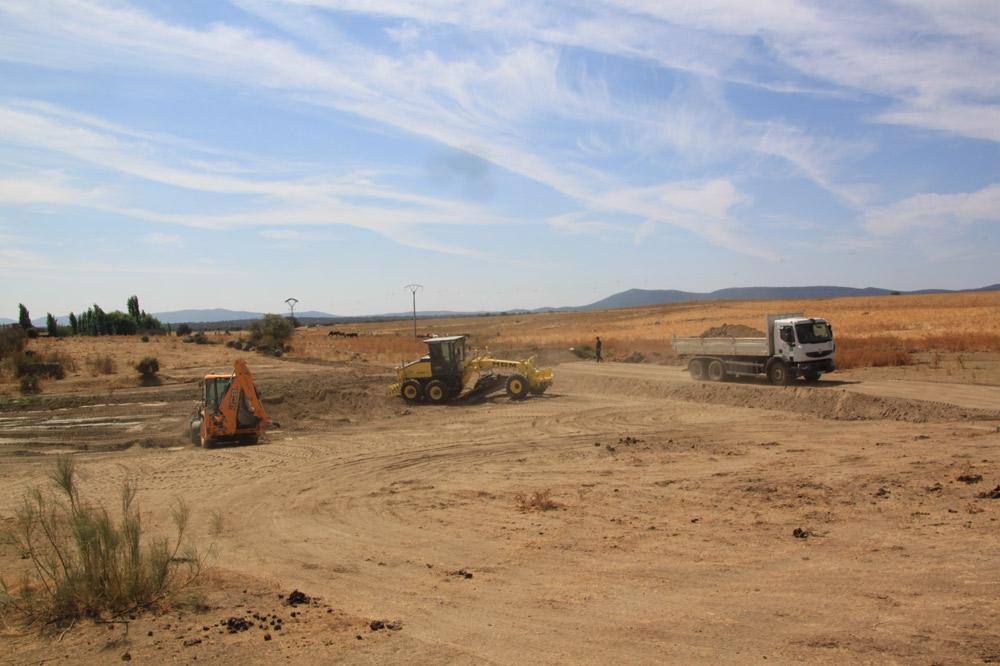
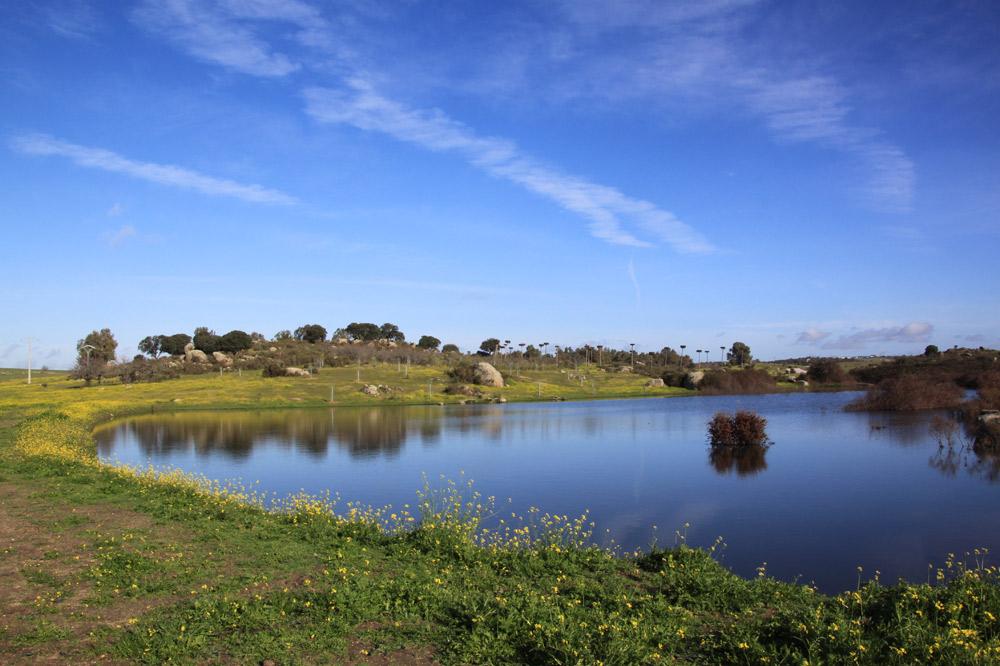
The European Stork Villages can also participate in a competition for small grants that contribute to the projects aims. For these funds, however, not only the villages themselves are eligible to apply, but also private persons (e.g. farmers), public facilities (e.g. schools), civil organizations (e.g. tourism associations, NGOs). The focus of these small grant projects is flexible and includes a wide range of topics that contribute to the protection of wet meadows and pastures in the widest sense, including extensive agriculture, public awareness, nature education, or sustainable tourism.
Some examples of the 22 small grant projects that have been implemented until 2017 are the following:
- A study on the habitat preferences and migration routes of white storks from the local colony, which also aimed to raise public awareness regarding stork conservation and habitat improvement. Implemented by Green Balkans in the ESV Belozem, Bulgaria.
- The creation of a pond on the compound of the local primary school, which not only serves as a wetland as such, but also as a site for environmental education purposes. Implemented by the primary school in the ESV Buzica, Slovakia.
- A multifaceted project including a baseline survey of the local white stork population, the collection of local myths and stories about white storks, the establishment of a local conservation group and the education of pupils and training of teachers in wet meadows and pastures conservation. Implemented by the Macedonian Ecological Society in the ESV Češinovo-Obleševo, North Macedonia.
- The insulation of dangerous powerlines combined with local capacity building on the conservation and monitoring of white storks. Implemented by the Community Center Prosveta 1909 in the ESV Belozem, Bulgaria.
- A multifaceted project combining the maintenance and replacement of white stork nests, the study of habitat use and dispersal of white storks and the education and training of local conservationists. Implemented by Green Balkans in the ESV Belozem, Bulgaria.
- The construction of an outdoor classroom and information boards and the elaboration of a concept for environmental education for children. Implemented by the primary school in the ESV Buzica, Slovakia.
- A multi-faceted project including the analyses of habitat use and migration patterns of white storks, educational workshops and public awareness raising. Implemented by the Zoo Zagreb in the ESV Čigoč in Croatia.
- The construction of an information point on the local white stork colony and their preferred habitats in the area, especially the wetland complex that was constructed. Implemented by the Municipality of the ESV Malpartida de Cáceres in Spain.
- The construction of an observation tower and information boards near a natural pond area, implemented by the Municipality of the ESV Nagybajom in Hungary.
- The restoration of white stork nests on several roofs. Implemented by the local Stork Club in the ESV Rühstädt in Germany.
- A multifaceted project including the construction of safe breeding platforms on electricity pylons, the insulation of electric wires, the support of a celebration of the arrival of storks and education of the local population. Implemented by the Association of Citizens “Taraš’s storks” in the ESV Taraš in Serbia.
The small grants scheme deliberately has a wide thematic scope and the implementation therefore contributes to the conservation of wet meadows and pastures both directly and indirectly, e.g. by creating the capacity and local acceptance for future conservation projects. Like the habitat restoration measures, the small grants scheme also produces very tangible results on the ground, and together the two schemes form the core of the wet meadows and pastures project.
Support
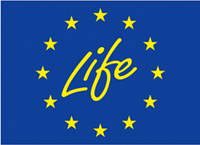
The wet meadows and pastures project benefits from the generous support by the Pancivis Foundation, the RHW Foundation, the Aage V. Jensen Charity Foundation, the Bristol Foundation and the LIFE Programme of the European Union (LIFE15 NGO/SGA/NL/000051), as well as by own contributions of the EuroNatur Foundation.
 Report sighting
Report sighting
Have you seen a white stork or another interesting species of animal, plant or fungus? Make your observation count for nature conservation and share it with other nature lovers! It’s free and it’s fun!






